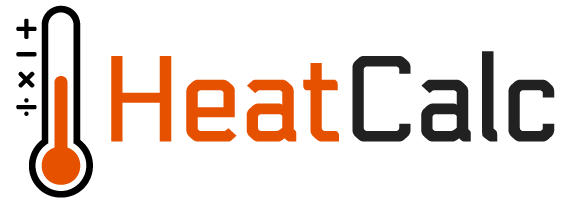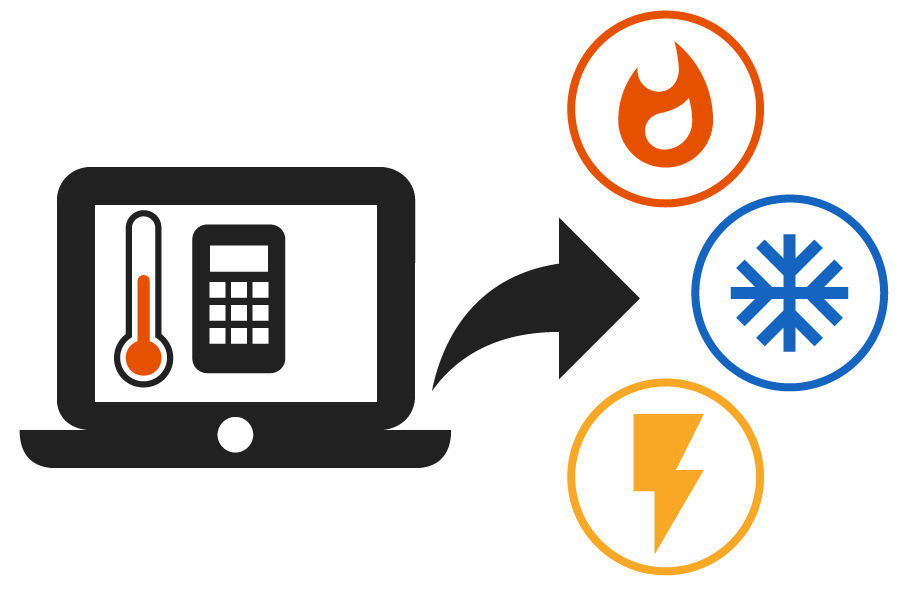Heat Calculator
Enter the specifics of your heat source below and the calculator will quantify how much heat, or thermal energy, that is recoverable in your heat source.
The heat calculator is currently not available as we work through a change in hosting services. We hope to have the calculator back up and running soon. Apologies for the inconvenience.
About each input
Medium
This is the form that the heat is contained within. Different fluid media (e.g. exhaust gas, water, steam, air) hold different amounts of heat for each pound of the medium. The most common form of large quantities of heat available for use is in exhaust gas.
Inlet temperature
This is the current temperature of the heat medium at the point where it can be utilized. We call it inlet temperature because it represents the temperature at the point it goes 'in' to the heat-utilizing system. Generally, higher temperatures mean more heat and more options for what you can do with the heat. This temperature can typically be found on a specification sheet or engineering designs for the heat source in mind.
Outlet temperature
This represents the temperature that the medium can be cooled to. As heat is pulled out of the medium for use, the temperature of the system decreases. For exhaust gas sources, most manufacturers assume 180C (356F), but exhaust temperatures can be reduced to as much as 150C (302F) if the exhaust is clean. For water and air, the outlet temperature typically matches with the temperature of air or water that you want to use. For steam, we've taken care of the assumptions for you.
Flow rate
The flow rate of the fluid is the last factor is calculating heat. This represents the quantity - in terms of volume or mass flow - of the medium. Flow rates can often be found on the specification sheet or engineering designs for the heat source in mind.
Frequently asked questions
Where do I find information about my heat source?
Typically the temperature and flow of the heat source can be found on the spec sheet of the prime heat creator (e.g. reciprocating engine, turbine, kiln, etc.).
My spec sheet only shows heat information for full load of my equipment, but I typically operate at 75% load - can I still use the same numbers?
No, the quantity of heat will typically vary with the load of the equipment. For example, we have noticed that many reciprocating engines operating at lower loads will have relatively constant exhaust temperatures, but exhaust flow rates tend to scale with the load. So an engine operating at 75% load would have a flow rate of approximately 75% of the full load's flow rate.
Is one accurate temperature and flow reading enough to base a project on?
No. It is important to gather multiple data points on how the heat generator operates and how you plan to operate it in the future. Typically, there is historical operating data to provide sufficient information on how the heat generator has operated in the past. This is a good basis to work from, but make sure to consider future operating plans (e.g. increased load).
What if I still do not know these measurements?
If you're serious about a heat utilization project, it's probably best to hire a waste heat consultant that has all the tools and skills to measure the system for you. There are sensors that can relatively easily capture temperature data (or pressure for steam) from exhaust and water heat sources. However, the layout of the sensors must be done in a certain way to get accurate information. Flow rates can be more challenging, particularly with exhaust.
Why shouldn't I reduce the exhaust to ambient temperature to maximize the quantity of heat available?
If exhaust is reduced below certain temperatures, corrosive acids can begin to form, which can destroy away at the heat exchanger. The temperature at which this happens (if at all) is dependent on the content of the exhaust. We have noticed that engine manufacturers often recommend not dropping the exhaust below 180C (356F) so this is often used for an initial assumption, but it is a good idea to check with a heat exchanger company or heat utilization professional your particular exhaust.

